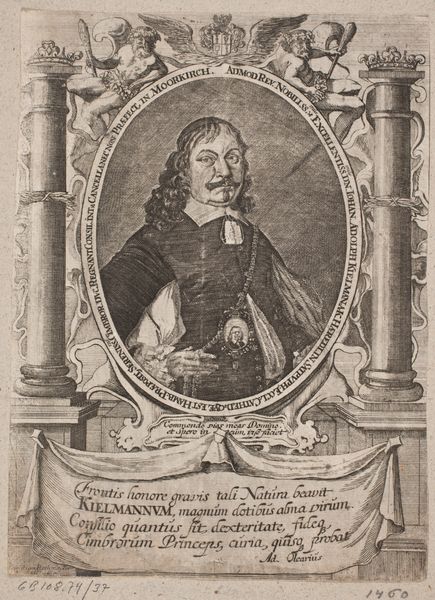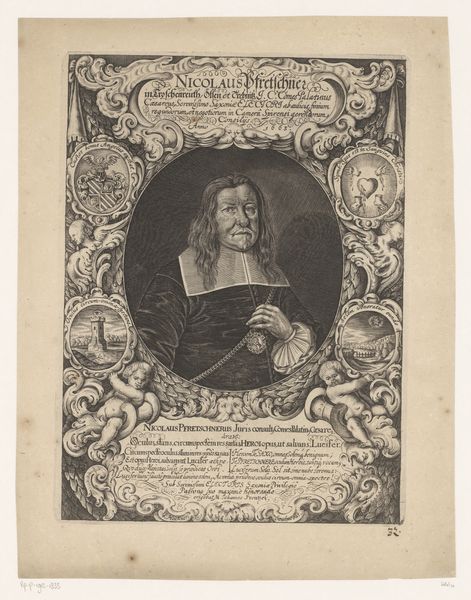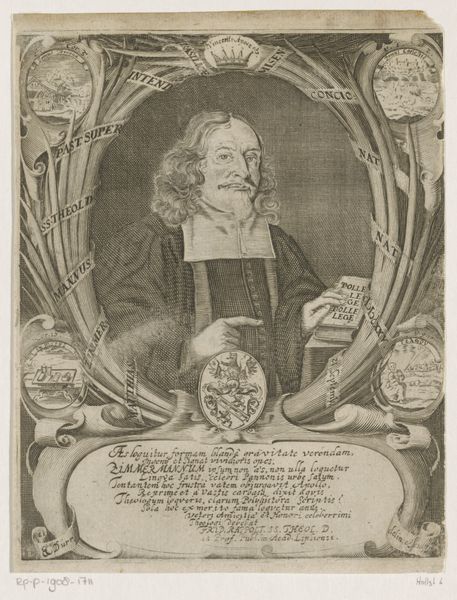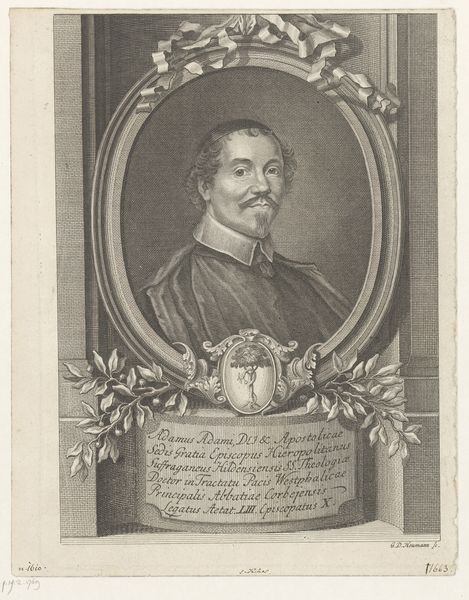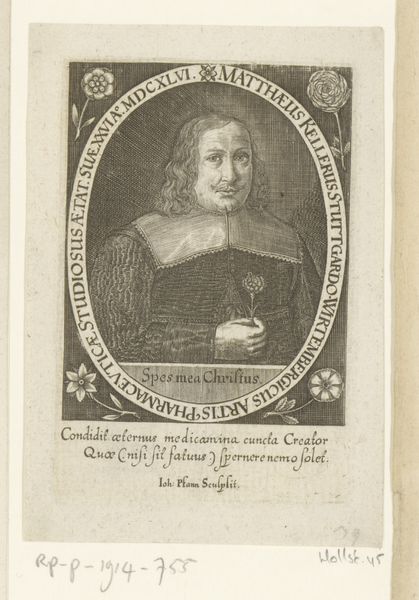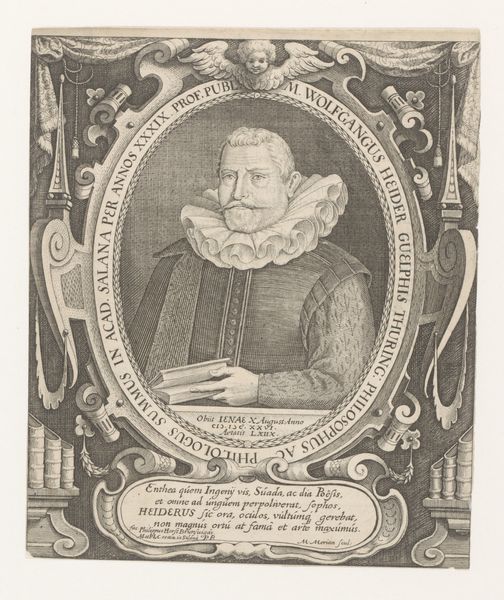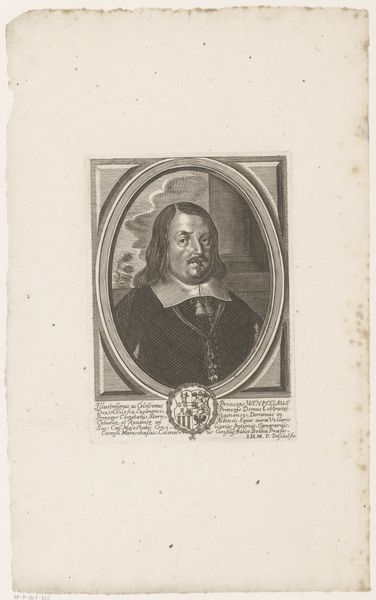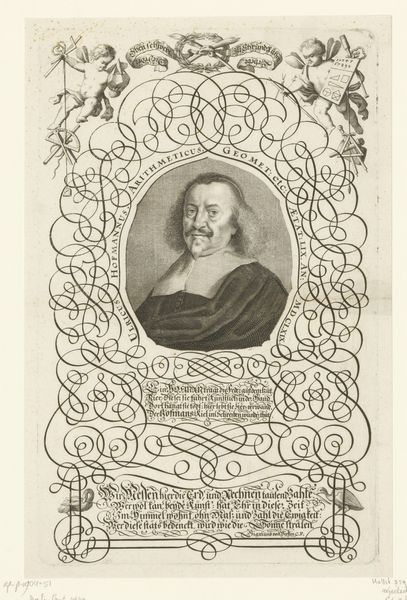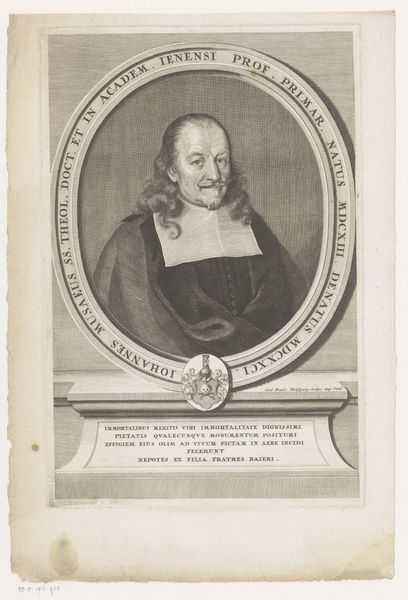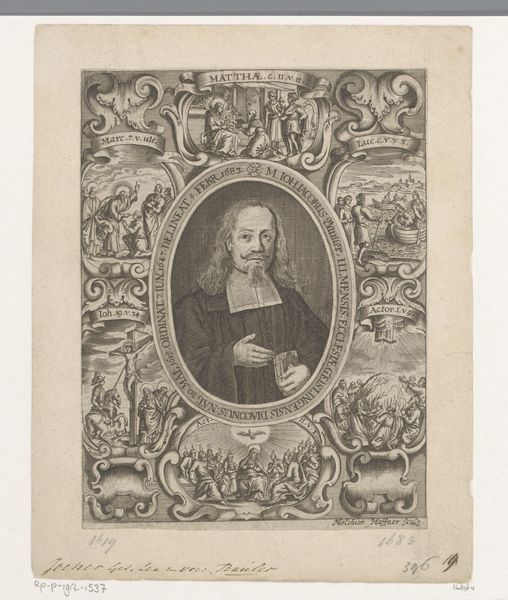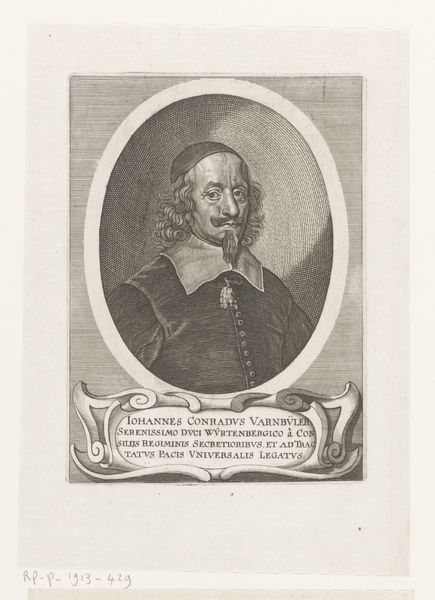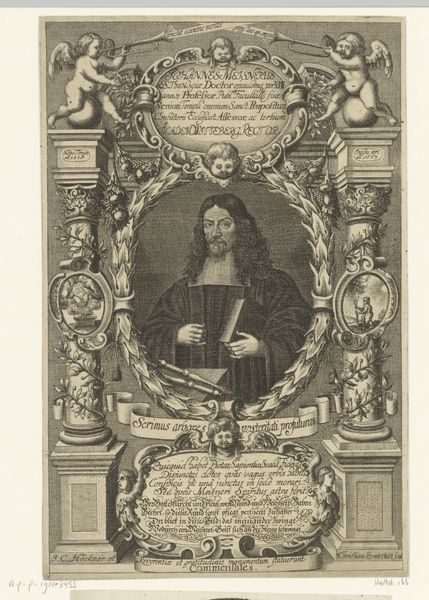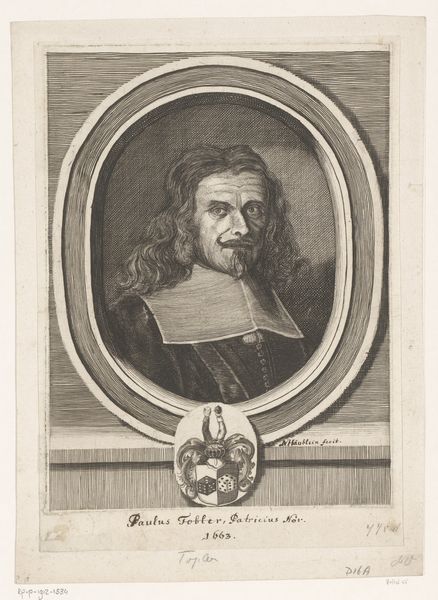
print, engraving
#
portrait
#
baroque
# print
#
history-painting
#
engraving
Dimensions: height 308 mm, width 191 mm
Copyright: Rijks Museum: Open Domain
This print of Johann Andreas Lucius was made by Johann Caspar Hoeckner, likely sometime in the mid-17th century. It's an engraving, meaning that the design was incised into a metal plate, which was then inked and printed onto paper. The intricate detail achieved in this portrait speaks volumes about the engraver’s skill. Look closely, and you'll see the way Hoeckner has used fine lines to create a likeness, varying the marks to capture light and shadow. This wasn't just about technical mastery, but time, labor, and the economic exchange for such specialized work. Also, consider the social context. Engravings like this were often commissioned to commemorate important figures, circulating their image and reinforcing their status. The choice of printmaking – a reproducible medium – suggests an intention to disseminate Lucius’s image widely, tying the work to the emergence of mass media and consumerism. Ultimately, this print is more than just a portrait. It's a testament to the skills of the craftsman, and a reflection of the social and economic forces shaping the world in which it was made.
Comments
No comments
Be the first to comment and join the conversation on the ultimate creative platform.
